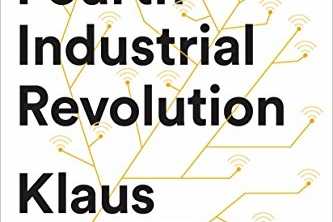In Exponential Organizations: Why new organizations are ten times better, faster, and cheaper than yours (and what to do about it), Indo-Canadian serial entrepreneur Salim Ismail and co-authors examines the organization of the future which they call “The Exponential Organization”.
An Exponential Organization is an agile organization that has the ability to leverage technology and flexible resources in order to dominate its market with fewer means than old-fashioned companies.
Exponential Organizations
An Exponential Organization (ExO) is one whose impact (or output) is disproportionally large—at least 10x larger—compared to its peers because of the use of new organizational techniques that leverage accelerating technologies. Rather than using armies of people or large physical plants, Exponential Organizations are built upon information technologies that take what was once physical in nature and dematerialize it into the digital, on-demand world.
The fundamental question of our exponential age is: What else can be information-enabled?
Traditional organizational structures, designed over the last few hundred years to hierarchically manage physical assets or people, are rapidly becoming obsolete. To compete in our rapidly changing world, we need a new kind of organization, one that is not only able manage this change, but also thrives on it.
Exponential Organizations have the capability to adapt to this new world of deep and ubiquitous information and convert it to competitive advantage. The ExO, in fact, is the appropriate commercial response to our new exponential world.
Linear Thinking
When you think linearly, when your operations are linear, and when your measures of performance and success are linear, you cannot help but end up with a linear organization, one that sees the world through a linear lens—as did even multi- billion dollar, technologically cutting-edge Nokia. Such an organization cannot help but have many of the following characteristics:
- Top-down and hierarchical in its organization
- Driven by financial outcomes
Linear, sequential thinking
- Innovation primarily from within
- Strategic planning largely an extrapolation from the past
- Risk intolerance
- Process inflexibility
- Large number of employees
- Controls own assets
- Strongly invested in status quo
ExOs will overwhelm traditional linear organizations in most industries because they take better advantage of the information-based externalities inaccessible to older structures, a feat that will empower them to grow faster—shockingly faster—than their linear counterparts, and then accelerate from there.
The Massive Transformative Purpose (MTP)
The Massive Transformative Purpose, or MTP—the higher, aspirational purpose of the organization. While companies of the past might have felt embarrassed to make such claims, today’s ExO declares with sincerity and confidence that it intends to accomplish near-miracles.
The SCALE Framework of Exponential Organizations
- Staff on Demand
- Community & Crowd
- Algorithms
- Leveraged Assets
- Engagement
Staff on Demand
For any ExO, having Staff on Demand is a necessary characteristic for speed, functionality and flexibility in a fast-changing world. Leveraging personnel outside the base organization is key to creating and running a successful ExO. The fact is, no matter how talented your employees, chances are that most of them are becoming obsolete and uncompetitive right before your eyes.
In 2010, the world had 1.2 billion people online globally. By 2020, that number will reach five billion. Nearly three billion more people and their brains will be available to work via smartphones, tablets or at Internet cafes. The capabilities that will be unleashed are beyond imagination.
Community and Crowd
Throughout human history, communities started off as geographically based (tribes), became ideological (e.g., religions) and then transitioned into civic administrations (monarchies and nation-states).
Today, however, the Internet is producing trait-based communities that share intent, belief, resources, preferences, needs, risks and other characteristics, none of which depend on physical proximity. For an organization or enterprise, its “community” is made up of core team members, alumni (former team members), partners, vendors, customers, users and fans. The “crowd” can be thought of as everyone outside those core layers.
True community occurs when peer-to-peer engagement occurs. The more open the community, though, the more traditional and best-practice-oriented the leadership model has to be.
Algorithms
In particular, there are two types of algorithms that are at the frontier of this new world: Machine Learning and Deep Learning.
- Machine Learning is the ability to accurately perform new, unseen tasks, built on known properties learned from training or historic data, and based on prediction. Key open source examples include Hadoop and Cloudera.
- Deep Learning is a new and exciting subset of Machine Learning based on neural net technology. It allows a machine to discover new patterns without being exposed to any historical or training data. Deep Learning algorithms rely on discovery and self-indexing, and operate in much the same way that a baby learns first sounds, then words, then sentences and even languages.
In 2002, Google’s revenues were less than a half-billion dollars. Ten years later, its revenues had jumped 125x and the company was generating a half-billion dollars every three days.
Leveraged Assets
As with Staff on Demand, ExOs retain their flexibility precisely by not owning assets, even in strategic areas. This practice optimizes flexibility and allows the enterprise to scale incredibly quickly as it obviates the need for staff to manage those assets. Just as Waze piggybacked off its users’ smartphones, Uber, Lyft, BlaBlaCar and Sidecar leverage under-utilized cars. (If you own a car, it sits empty about 93 percent of the time.)
Engagement
Key attributes of Engagement include:
- Ranking transparency
- Self-efficacy (sense of control, agency and impact)
- Peer pressure (social comparison)
- Eliciting positive rather than negative emotions to drive long-term behavioral change
- Instant feedback (short feedback cycles)
- Clear, authentic rules, goals and rewards (only reward outputs, not inputs)
- Virtual currencies or points
Gaming
“For the Millennial generation, gaming is a way of life. Today, more than seven hundred million people around the world play online games—159 million in the U.S. alone—and most play for more than an hour each day. The average young person racks up more than 10,000 hours of gaming by the age of twenty-one. That’s almost exactly as much time as kids spend in the classroom throughout middle school and high school. Gaming isn’t just something that young people do, it is a large part of what and who they are.”
ExO’s internal mechanisms be expressed with the acronym IDEAS.
- Interfaces
- Dashboards
- Experimentation
- Autonomy
- Social Technologies
Interfaces – Self Provisioning
Interfaces are filtering and matching processes by which ExOs bridge from SCALE externalities to internal IDEAS control frameworks. They are algorithms and automated workflows that route the output of SCALE externalities to the right people at the right time internally. In many cases, these processes start out manual and gradually become automated around the edges. Eventually, however, they became self-provisioning platforms that enable the ExO to scale.
Dashboards
Given the huge amounts of data from customers and employees becoming available, ExOs need a new way to measure and manage the organization: a real-time, adaptable dashboard with all essential company and employee metrics, accessible to everyone in the organization.
Starting an ExO
Step 1: Select an MTP (Massive Transformative Purpose).
Finding an MTP can be seen as a novel and perhaps more interesting way of asking yourself the following questions:
- What do I really care about?
- What am I meant to do?
Two more questions that can help speed the process of discovering your passion:
- What would I do if I could never fail?
- What would I do if I received a billion dollars today?
Entrepreneurial success rarely comes from the idea. Instead, it comes from the founding team’s never-say-die attitude and relentless execution. Those who really want something will find options. Those who just kind of want it will find reasons and excuses.
The three key success factors for an ExO idea are:
- First, a minimum 10x improvement over the status quo.
- Second, leveraging information to radically cut the cost of marginal supply (i.e., the cost to expand the supply side of the business should be minimal).
- Third, the idea should pass the “toothbrush test” originated by Larry Page: Does the idea solve a real customer problem or use case on a frequent basis? Is it something so useful that a user would go back to it several times a day?
The average lifespan of an S&P 500 company has fallen from sixty-seven years a century ago to just fifteen years today, and 40 percent of today’s Fortune 500 companies won’t exist a decade from now.
Need help with developing a digital strategy for your business? Get in touch.


